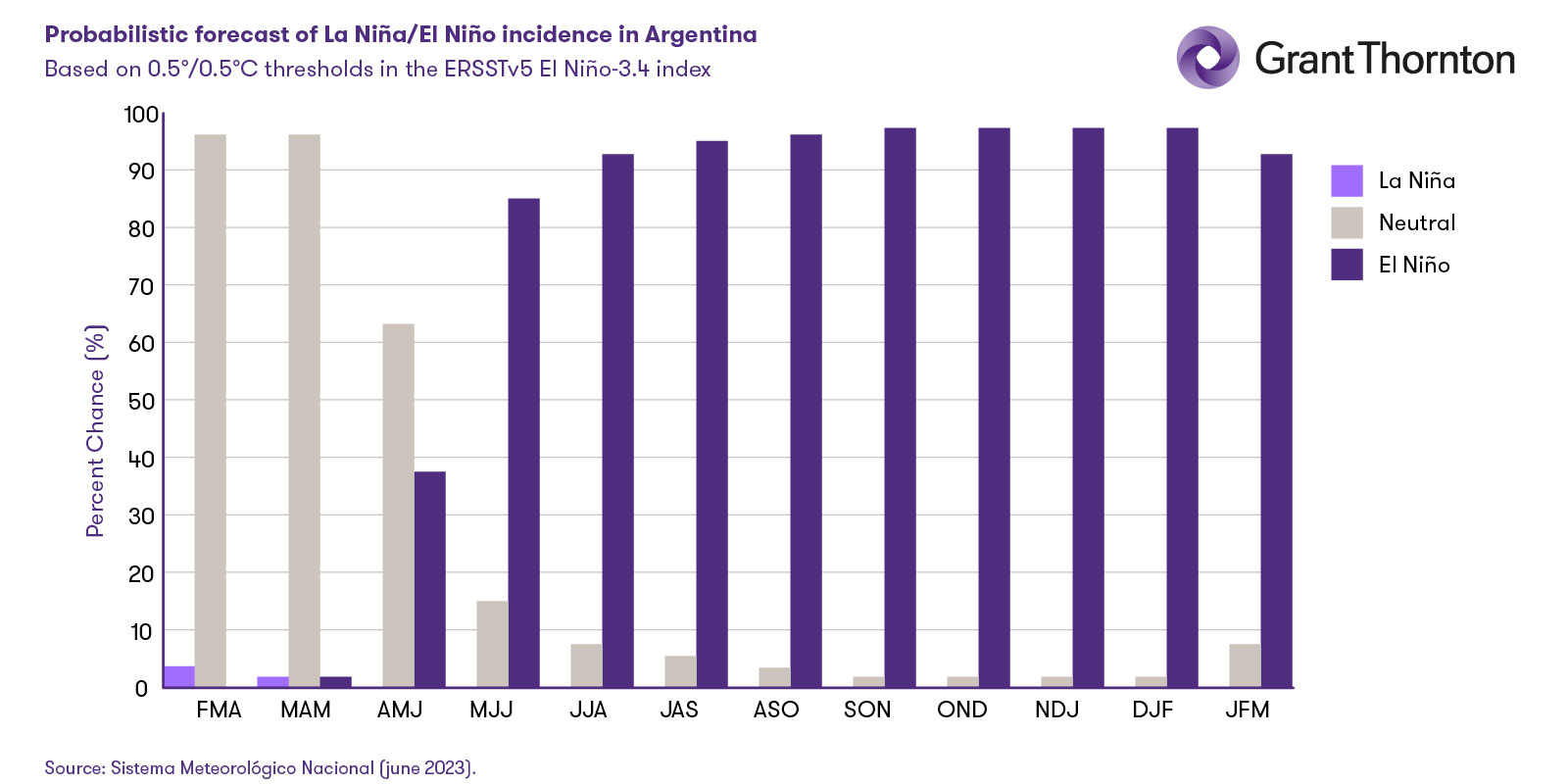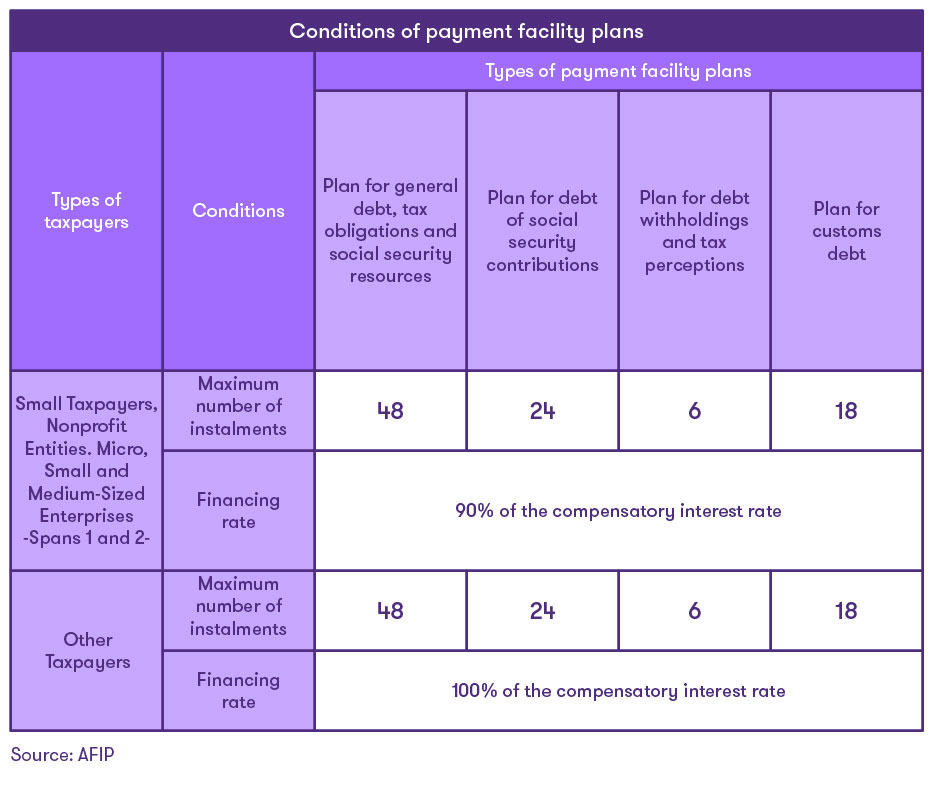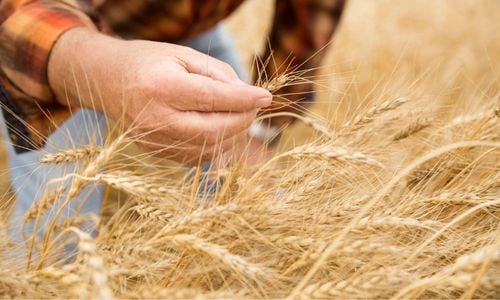-
Compliance
Assistance in the design, implementation and monitoring of Compliance programs within the framework of local and international regulations (FCPA, Corporate Criminal Responsibility Law), including course delivery.
-
ESG & Sustainability
Projects related to ESG (environmental, social and governance) and Sustainability.
-
Forensic
The services offer includes expert advice in litigation resolution and the development of procedures in legal/digital forensics and cybersecurity.
-
Human Capital
Grant Thornton's Human Capital division has a team of professionals determined to accompany individuals and organizations throughout the relationship between the employee and the organization.
-
Organizational restructuring
Advice on operational restructuring to companies in difficulty, their creditors or other interested parties.
-
Services to the Government and the Public Sector
Financial audit projects and special technical and concurrent reviews of programs of national and subnational governments financed by International Credit Organizations. Special projects for government entities, public and mixed companies.
-
Valuation Services
We provide stock, business, asset, and liability valuations in support of negotiations, account structuring, and tax opportunities.
-
Transaction Advisory Services
The service offer includes financial due Diligence, operations services, business and strategic intelligence, ratings, advice on mergers and acquisitions, capital markets and debt advice.
-
Academy - Empowered by Grant Thornton Argentina & Perú
Academy is an e-learning platform that emerged as a joint initiative of Grant Thornton Argentina and Grant Thornton Perú. It is designed so that everyone can acquire new skills in accounting, auditing, taxes, technology and business through access to multiple courses and certifications.
-
External audit
We offer services of external audit of financial statements; assurance reports, agreed procedures and certifications; due-diligence and take-over of companies.
-
Audit methodology and technology
At Grant Thornton we use a single audit methodology across our global network. We apply it through an integrated set of software tools known as the Voyager suite. Meet it now.
-
Professional standards and training
Our IFRS advisors can help you navigate the complexity of the standards so you can spend your time and effort on your business.
-
Prevention of money laundering and financing of terrorism
At Grant Thornton we provide advice to our clients in the development of an Asset Laundering and Terrorist Financing Prevention strategy that allows them to prevent risks in a comprehensive manner.

-
Tax outsourcing
Taxes have a strong impact on your business decisions. At Grant Thornton we will respond quickly and tailor solutions for our clients.
-
Payroll
Put your payroll in good hands while you take your business beyond. Learn about our services.
-
Accounting, administration and finance services
To achieve the highest business benefits, you need an experienced team by your side. Learn about our services.
-
Start-up companies
Learn about our solutions to help build your business.
-
External audit
We offer services of external audit of financial statements; assurance reports, agreed procedures and certifications; due-diligence and take-over of companies.
-
AML - FIU Independent External Reviewer
We participate in the implementation of the requirements of the FIU in leading companies and our services ensure an orderly framework, optimizing the investment.
-
Internal audit
An internal audit helps identify gaps, deficiencies, and potential for inherent risk in all facets of the organization.
-
Legal audit
The monitoring of the legal area is usually a complex and difficult task for organizations, which however cannot be neglected.
-
Creation and acquisition of Financial Entities
We have the knowledge and experience in activities related to the acquisition and creation of financial entities, both locally and internationally.
-
Responsible for regulatory compliance
At Grant Thornton we offer the service of acting as "Responsible for Regulatory Compliance and Internal Control" for companies that requested registration as Settlement and Clearing Agent and Trading Agent.
-
Global Mobility Services
Sending someone abroad involves liabilities and obligations. We offer interesting solutions to minimize the tax burden for both parties.
-
Direct Tax
We provide clear and practical solutions that meet your specific business needs, in the most tax-efficient way possible.
-
Indirect Tax
Grant Thornton's tax teams take a rigorous approach to help you meeting your tax obligations, whatever challenges you may face along the way.
-
International taxes – Transaction support
We offer our international experience in the field and make available the resources to plan and adequately comply with regulatory frameworks.
-
Services to private clients
Wherever you are in the world, our tax specialists can help you with your interests and investments abroad.
-
Clean energy and technology
Growing demand, development of new ways of energy and need of a sustainable future: we accompany our client in these changes and to be one step ahead.
-
Mining
Our flexible, partner-led teams are dynamic and focused on development. We take time to understand the details of the client’s business and offer unique solutions.
-
Oil and gas
Our Oil & Gas teams have the deep knowledge, wide experience and vision needed to offer our clients practical solutions adapted to their businesses.
-
Banking
Grant Thornton offers meaningful and accurate solutions for operational and transactional issues, litigation and administrative disputes in banking.
-
Private capital
We gather international teams of experts in corporate finance, restructuring and recovery, tax and insurance services to deliver customized solutions from initial investment, through development stages until the end of each project.
-
Fintech
We work to take advantage of all opportunities and manage industry risks, allowing our clients to always be one step beyond their competitors.
-
Asset management
We have specialized teams in more than 140 markets delivering solutions regarding insurance, taxes and advisory to global, international, regional, local asset managers.
-
Insurance
Thanks to our specialized team we offer accurate solutions for operational and transactional matters, litigations and administrative conflicts.

According to the latest National Agricultural Census (2021), in Argentina, 85% of the territory is destined for agricultural and forestry use. This puts agribusiness in first place as the country's main economic and productive engine.
The severe drought that has been sustained since November 2022 and began to decrease as of March 2023 severely affected agricultural and livestock activities. Sowings were delayed, plague appeared and affected production and pastures, and there was a decrease in fodder which. Added to the problems for the supply of animal water, the drought produced not only the loss of cattle, but also a decrease in pregnancy rates, loss of body condition and low performance.
In January 2023, the national official bulletin (Boletín Oficial de la República Argentina) declared a state of emergency and/or agricultural disaster in 13 provinces. At the same time, 4 provinces took local measures to mitigate the crisis until they were approved by the National Government.
February of 2023 was the month most affected by the drought. 173,626,316 hectares of crops and 24,333,868 heads of cattle were compromised. After this month, there was a period of climate neutrality with moderate rainfall that allowed the recovery of soil moisture in more than 45 million hectares and the increase in water reserves in much of the country. However, the water deficit pattern continued to predominate.
For this reason, the National Government published a new Decree declaring a state of emergency and/or disaster until December 31, 2023. According to this legislation, taxpayers whose main activity is agriculture or livestock and the property in which the main activity is carried out is in a declared, approved, and current emergency and/or agricultural disaster zone due to drought, they will automatically obtain the benefits provided by Law No. 26,509 and its amendments.
 Prior to this relaxation of the procedure for accession to the benefits of the aforementioned Law, the producers affected by the emergency had to make the request with their tax code on the AFIP website. "In this instance, in addition to confirming the status of beneficiary and that the affected exploitation constitutes their main activity; they had to attach the emergency certificate issued by the competent authority of the respective province and the documentation that accredits the quality of owner or, as the case may be, of the tenant or lessee of the affected property”, explains Julia Adano, Tax Partner and Agribusiness spokesperson at Grant Thornton Argentina.
Prior to this relaxation of the procedure for accession to the benefits of the aforementioned Law, the producers affected by the emergency had to make the request with their tax code on the AFIP website. "In this instance, in addition to confirming the status of beneficiary and that the affected exploitation constitutes their main activity; they had to attach the emergency certificate issued by the competent authority of the respective province and the documentation that accredits the quality of owner or, as the case may be, of the tenant or lessee of the affected property”, explains Julia Adano, Tax Partner and Agribusiness spokesperson at Grant Thornton Argentina.
"Based on the new regulation from the Decree 193/23 and the 5,350 General Resolution (AFIP), taxpayers must only process the agricultural emergency certificate before the competent provincial authority, who will be the one that informs AFIP so that it can assign the corresponding categorization, which can then be consulted”, Adano clarifies.
“Although the benefits contemplated by the regime are measures that try to partially alleviate the damage caused by the severe drought that hit the agricultural sector in different regions of our country, these modifications imply, for those who decide to benefit from it, a simplification of the procedure of adhesion”, she emphasizes.
What to expect in the future
According to the dynamic and statistical models of the National Meteorological Service, on average, in the June-July-August 2023 (JJA) quarter, there is a 92% probability of development of an "El Niño" climatic phase, characterized by rainfall above normal standards and is expected to last all winter.
However, the Agricultural Risk Office (ORA) of the Ministry of Agriculture, Livestock and Fisheries, points out that in the western NOA and northern Cuyo regions no rain is forecast for the May-June-July quarter (MJJ), as it is dry season in the region.

Far from being a complete relief for much of the country, the rain after long periods of drought can seriously damage the livestock sector and cause the loss of cattle due to nitrate poisoning.
This phenomenon occurs due to the accumulation and concentration of nitrates in the plants, which have not been transformed into vegetable protein due to water scarcity that prevents normal crop growth. This process is enhanced if nitrogenous fertilizers -such as urea- were previously applied and did not leach out, or when the soil has high nitrogen concentrations due to previous crops.
In these cases, both agronomic and financial planning is important, since in many cases prevention would imply the purchase of fodder or the use of cereals for other purposes.
In this sense, Julia Adano comments that General Resolution 5,350 also contemplates a plan of payment facilities for debts derived from tax obligations and social security resources due as of March 31, 2023, including interest and fines, additional charges for import or export taxes and liquidations of these and their interests. "Taking into account the particular situation of each taxpayer, the activity carried out and the context, it may be convenient to consider the use of the plan that, although does not imply the reduction of interest or the release of sanctions, allows the financing of debt in fees and can provide relief", she concludes.

Argentina in the international scenario
After the export records in the annual accumulated volume in the ports of Quequén and Bahía Blanca in 2022, with 7,553,681 and 31,409,347 tons respectively of mobilized grains, the National Ministry of Agriculture calculates that the national exportable balance of grains and by-products will be reduced by 42.8% in relation to 2022 and 1,285 fewer cargo ships are projected to enter the different ports of Argentina to transport exports.
 “This drop in exports significantly affects foreign exchange earnings. This means fewer reserves for the Central Bank and lower tax collection, negatively impacting our macroeconomy”, comments Arnaldo Hasenclever, Director of the Grant Thornton Argentina International Business Center. “This year, what has not yet impacted our energy industry is the President Néstor Kirchner gas pipeline, which will transport gas from Vaca Muerta. This work would allow importing less energy and generate lower cost. In any case, this savings would not fully compensate the loss from agricultural exports”, he adds.
“This drop in exports significantly affects foreign exchange earnings. This means fewer reserves for the Central Bank and lower tax collection, negatively impacting our macroeconomy”, comments Arnaldo Hasenclever, Director of the Grant Thornton Argentina International Business Center. “This year, what has not yet impacted our energy industry is the President Néstor Kirchner gas pipeline, which will transport gas from Vaca Muerta. This work would allow importing less energy and generate lower cost. In any case, this savings would not fully compensate the loss from agricultural exports”, he adds.
During March 2023, cereal exports decreased by 56% compared to the same month of the previous year. This is because the lack of surface moisture conditioned the progress of sowing in the 2022/2023 season, mainly compromising the sowing of second-rate soybeans and early corn. “Soybean was also affected by the drop in international prices. There were good harvests in the United States and in Brazil, which had a record harvest. However, this year the ton does not exceed USD$600, so the effect is double: drought and a drop in the price,” explains Hasenclever.
“The transport industry is also affected since the logistics of cereals to ports has decreased. In fact, there are also fewer grain trucks on the road. In the same way, regional economies are harmed, affecting towns all over the country. No matter how much does the “soybean dollar” conversion to Argentine Peso is, or which differential value has been put for other cereals and concepts, these do not compensate for the losses caused by the crisis due to the drought”, concludes Arnaldo.
